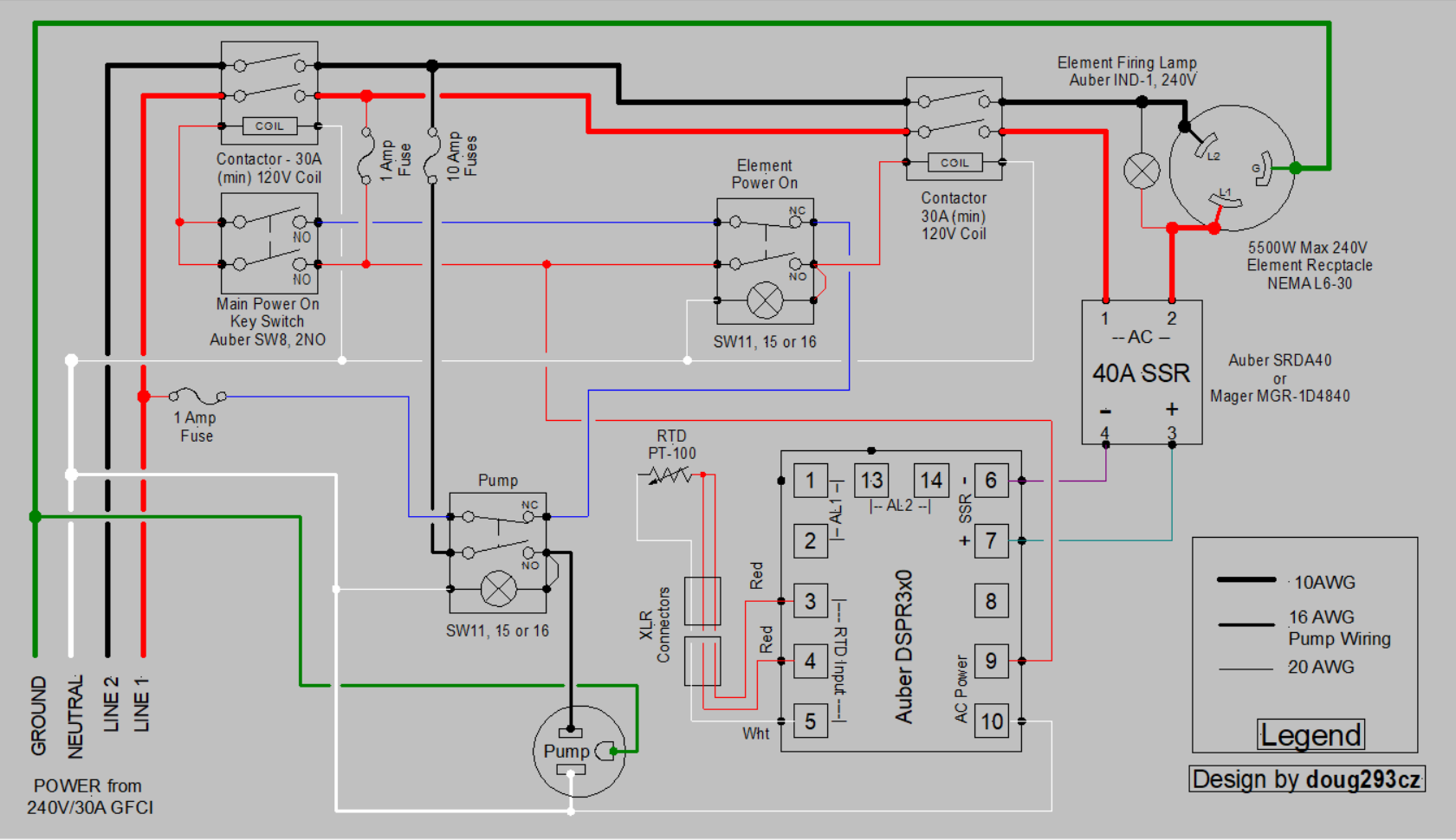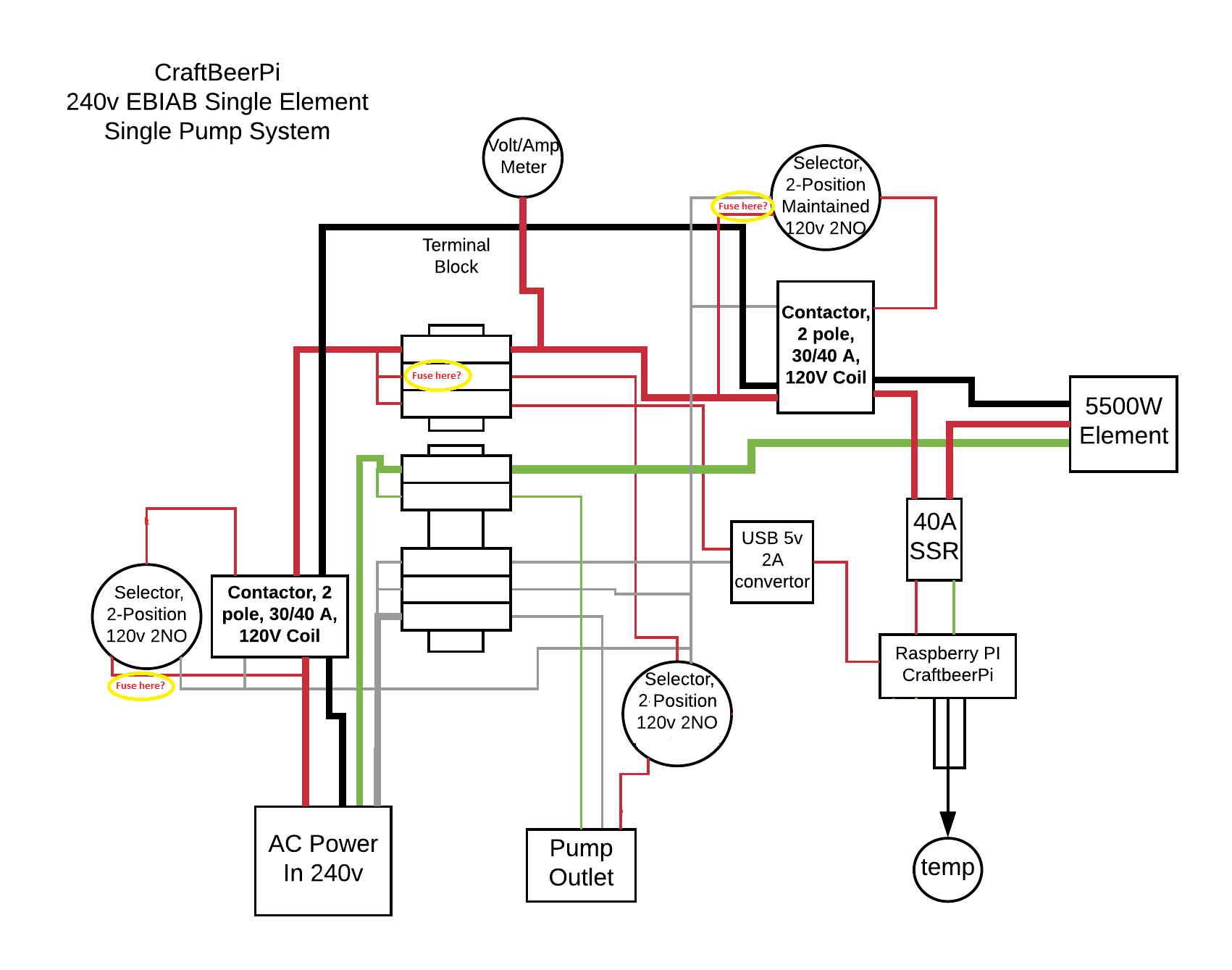Brian Parfitt
Active Member
- Joined
- Apr 17, 2020
- Messages
- 42
- Reaction score
- 3
Quick question regarding wire gauge used in panels.
I see 10 ga used commonly for 240V 30amp circuit within a panel. But often, one of the 240 legs is split out to a switch, led or other 120v item and 14ga or 18ga is used for this portion. See circled section in wiring schematic below. Since the overall circuit is sourced from a 30 amp circuit, how is it possible to transition to a lower gauge wire safely? Note the thick line to the Main Power breaker has been identified as 10ga. A second line runs from the same terminal to an led and is shown on the schematic as 18ga. I've also seen terminal strips where 10ga runs in on one side of a bus and then smaller wires branch off. Sorry if this is a silly question, but is anyone able to explain?
Thanks,
Brian

I see 10 ga used commonly for 240V 30amp circuit within a panel. But often, one of the 240 legs is split out to a switch, led or other 120v item and 14ga or 18ga is used for this portion. See circled section in wiring schematic below. Since the overall circuit is sourced from a 30 amp circuit, how is it possible to transition to a lower gauge wire safely? Note the thick line to the Main Power breaker has been identified as 10ga. A second line runs from the same terminal to an led and is shown on the schematic as 18ga. I've also seen terminal strips where 10ga runs in on one side of a bus and then smaller wires branch off. Sorry if this is a silly question, but is anyone able to explain?
Thanks,
Brian







